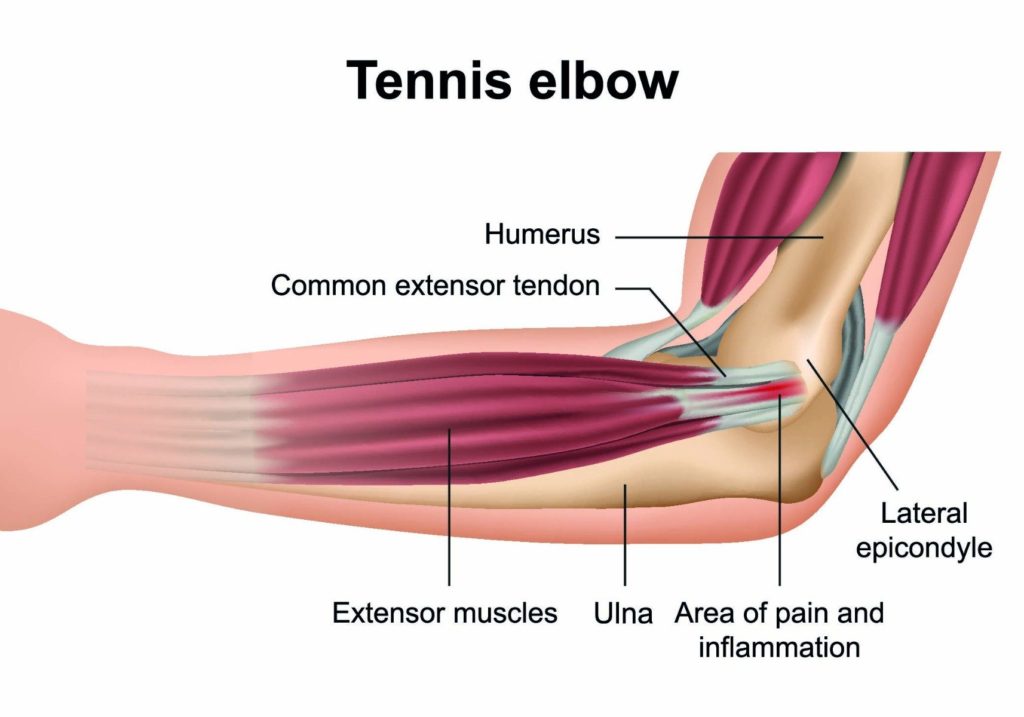What is it?
Lateral Epicondylalgia or as it’s more commonly known, Tennis Elbow, is a sprain or strain caused by an overload of the tendons in your elbow.
What does it feel like?
You may find it painful to touch the outside of your elbow or if you knock your arm on anything it might hurt a lot.
Painful tasks include gripping or holding small objects eg peeling potatoes, turning keys, painting, driving, holding a racket or golf club.
- You may have noticed that your forearm muscles are very tight as well.
- Your neck or even shoulders may feel tender and sore to touch also.
- Rest from certain activities can help temporarily but repetitive use brings your pain back again.
- You may experience pins and needles, tingling or numbness into your forearm and/or hand and these symptoms are a sign that your nerve is affected so it is very important to get advice from a physiotherapist.
What causes Tennis Elbow Pain?
Tennis elbow can be caused by a variety of different tasks but is generally a sudden increase in load. For example doing more of a type task, getting a new piece of equipment eg heavier racket or new kitchen utensil, or increasing your training all of a sudden. This repetitive or new task is too much for the muscles and tendons to handle which causes an overload in one area and inflammation. In general you will not feel the pain immediately but a few hours later or the next day.Once the tendon is inflamed it is easily aggravated and you will find more and more tasks difficult.
How is Tennis Elbow Pain diagnosed?
Your Physiotherapist or Doctor can diagnose Tennis Elbow from your symptoms and from a few specific tests around your elbow and wrist. It can normally be diagnosed without invasive tests or investigations. Further investigations such as x-rays or ultrasound scans may be required if your symptoms are not improving after a few months of rehabilitation.
How can Back in Action Physiotherapy help?
At Back in Action we will talk to you and listen to how your pain is affecting your everyday activities. We will make sure your neck and shoulder are not causing your symptoms and then use techniques such as mobilisations, massage, stretching, acupuncture, and some basic home exercises to help you get better, faster. We can advise and educate you about your injury and set goals with you to achieve in and out of our sessions.
Before you come to see us at Back in Action have a think about all of the different things in your day that can bring on your elbow pain. Also, try to keep your neck and shoulder moving as normally as possible to speed up your recovery and avoid getting further injuries. Painkillers and Anti-inflammatories can help to relieve some pain and we recommend you see your local Pharmacist or Doctor regarding the best type for you. For the latest update on treatment for elbow pain see our latest blog here.

